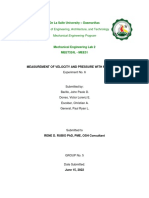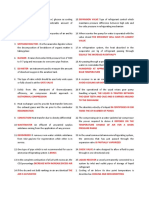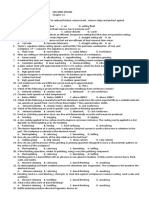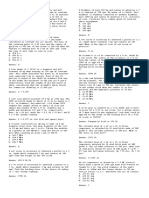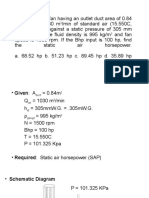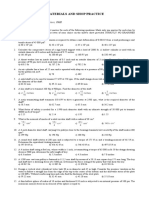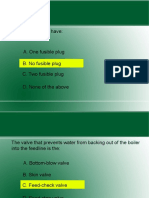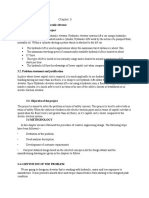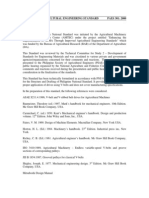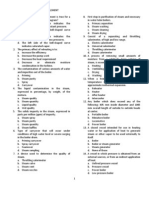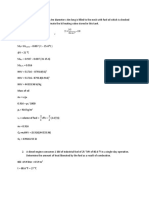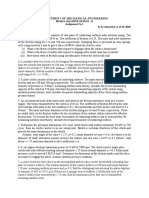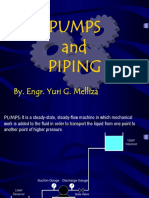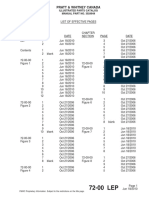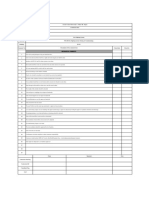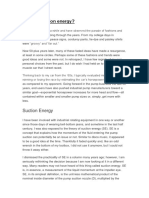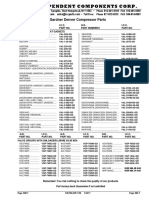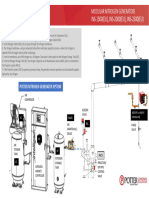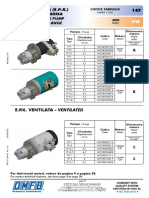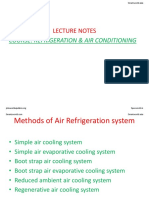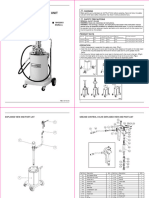www.pdfstall.
online
�www.pdfstall.online
��www.pdfstall.online
�www.pdfstall.online
www.pdfstall.online
��www.pdfstall.online
��www.pdfstall.online
�www.pdfstall.online
��www.pdfstall.online
�www.pdfstall.online
��www.pdfstall.online
� www.pdfstall.online
Velocity of Fluid through Piping :-
0.3208 X GPM / Internal Area
What is the velocity of 10 gpm going through a 1/2″ diameter schedule 40 pipe?
GPM = 10
Internal Area = 0.304 (see note below)
0.3208 X GPM / Internal Area = 0.3208 X 10 X 0.304 = 10.55 feet per second
Note: The outside diameter of pipe remains the same regardless of the thickness of the
pipe. A heavy duty pipe has a thicker wall than a standard duty pipe, so the internal
diameter of the heavy duty pipe is smaller than the internal diameter of a standard
duty pipe. The wall thickness and internal diameter of pipes can be found on readily
available charts.
�Hydraulic steel tubing also maintains the same outside diameter regardless of wall
thickness.
Hose sizes indicate the inside diameter of the plumbing. A 1/2″ diameter hose has an
internal diameter of 0.50 inches, regardless of the hose pressure rating.
www.pdfstall.online
Suggested Piping Sizes :-
Pump suction lines should be sized so the fluid velocity is between 2 and 4 feet per
second.
Oil return lines should be sized so the fluid velocity is between 10 and 15 feet per
second.
Medium pressure supply lines should be sized so the fluid velocity is between 15 and
20 feet per second.
High pressure supply lines should be sized so the fluid velocity is below 30 feet per
second.
Pneumatic Valve Sizing :-
Notes:
All these pneumatic formulas assume 68 degrees F at sea level
All strokes and diameters are in inches
All times are in seconds
All pressures are PSI.
Valve Sizing for Cylinder Actuation
SCFM = 0.0273 x Cylinder Diameter x Cylinder Diameter x Cylinder Stroke / Stroke
Time x ((Pressure-Pressure Drop)+14.7) / 14.7
Cv Required = 1.024 x SCFM / (Square Root of (Pressure Drop x (Pressure-Pressure
Drop+14.7)))
Pressure 2 (PSIG) = Pressure-Pressure Drop
www.pdfstall.online
�Flow Coefficient for Smooth Wall Tubing
Cv of Tubing =(42.3 x Tube I.D. x Tube I.D. x 0.7854 x (Square Root (Tube I.D. /
0.02 x Length of Tube x 12)
AIR FLOW Q (IN SCFM) TO ATMOSPHERE
SCFM to Atmosphere = Valve Cv x (Square Root of (((Primary Pressure x 0.46) +
14.7) x (Primary Pressure x 0.54))) / 1.024
Pressure Drop Max (PSIG) = Primary Pressure x 0.54
Air Flow Q (in SCFM) if Cv is Known
Valve Cv x (Square Root of (Pressure Drop x ((PSIG – Pressure Drop) + 14.7))) /
1.024
CV IF AIR FLOW Q (IN SCFM) IS KNOWN
1.024 x Air Flow / (Square Root of (Pressure Drop x ((PSIG-Pressure Drop) + 14.7)))
www.pdfstall.online

